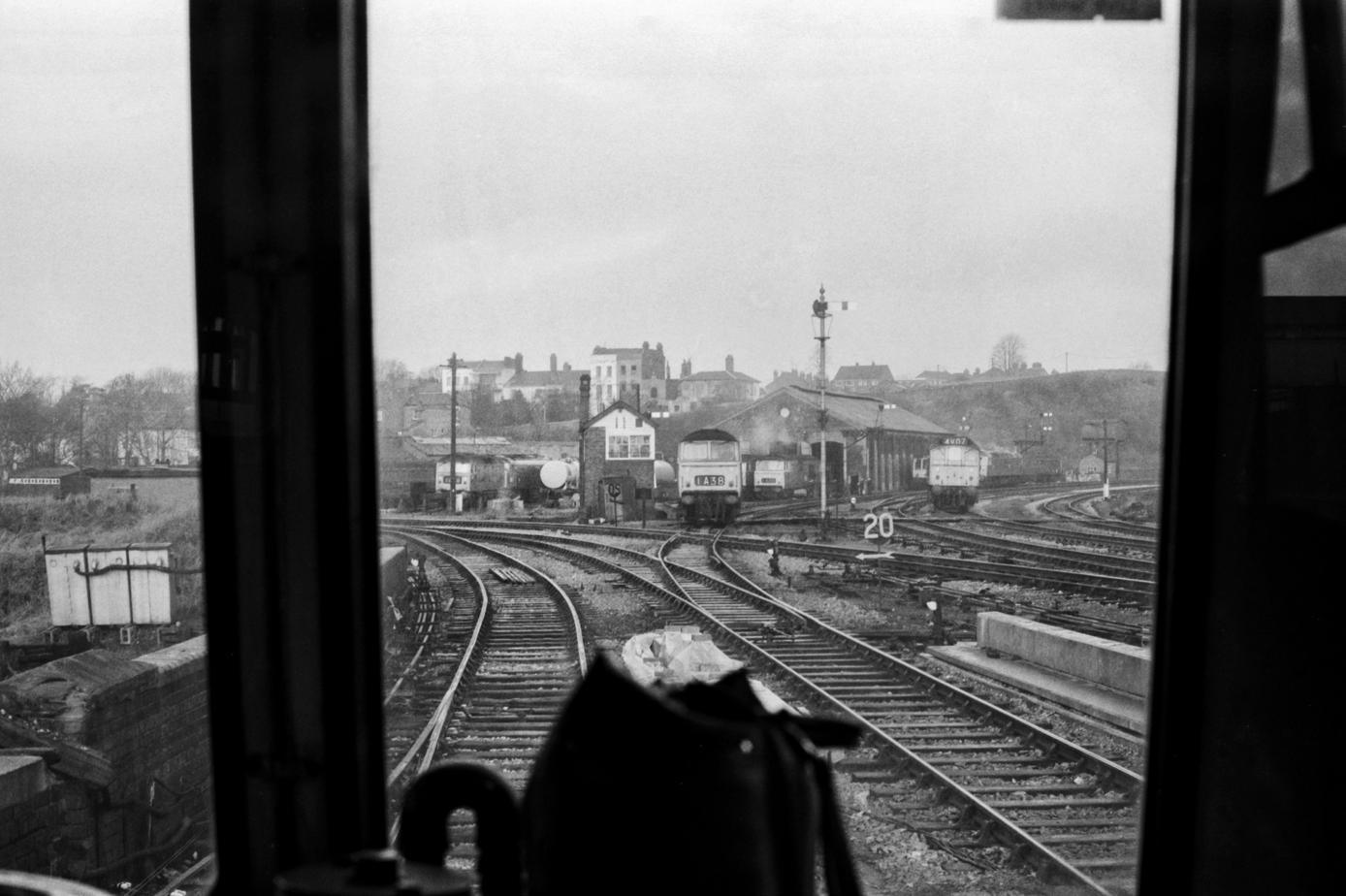
6 minute read
Preview
From the driver’s seat of a WR Cross Country Class 119 DMU in the down Hereford bay at Worcester Shrub Hill, we see a Hymek Type 3 Class 35 going on shed after working in on an express from London� 85A is, typically, bustling with movements and stabled locos, with Classes 45 and 47 visible in addition to the Hymeks and a DMU, whilst a light Sulzer Type 2 Class 25 is creeping round the goods line on the right.
As suggested previously, if it wasn’t for the Hymek Class 35 in rail-blue it would be difficult to tell that this shot wasn’t taken in the steam era. The train is a Saturday working, the 10�05am 1B28 from London to Worcester, arriving at Worcester Shrub Hill in 1972� The yard pilot Class 08 on the right is probably locked up and stabled ready for Monday morning’s restart�
Advertisement

The Lickey Incline was a mecca for enthusiasts in steam days and actually didn’t lose a lot of its appeal thereafter� The sight and sound of a Class 47 working at its limits on a miserably wet Friday afternoon with over 1000 tonnes of oil hung behind it as it headed laboriously towards Blackwell was actually pretty impressive � Even better, Hymek Type 3 Class 35s (and Class 37s) took over banking duties after the 94XX Pannier tanks had all gone � If you thought one Hymek on full power sounded good, you just had to experience three in multiple. Here, in time-honoured fashion, they roll back down to Bromsgrove afterwards to wait for the next big push. D7023 leads this formation�
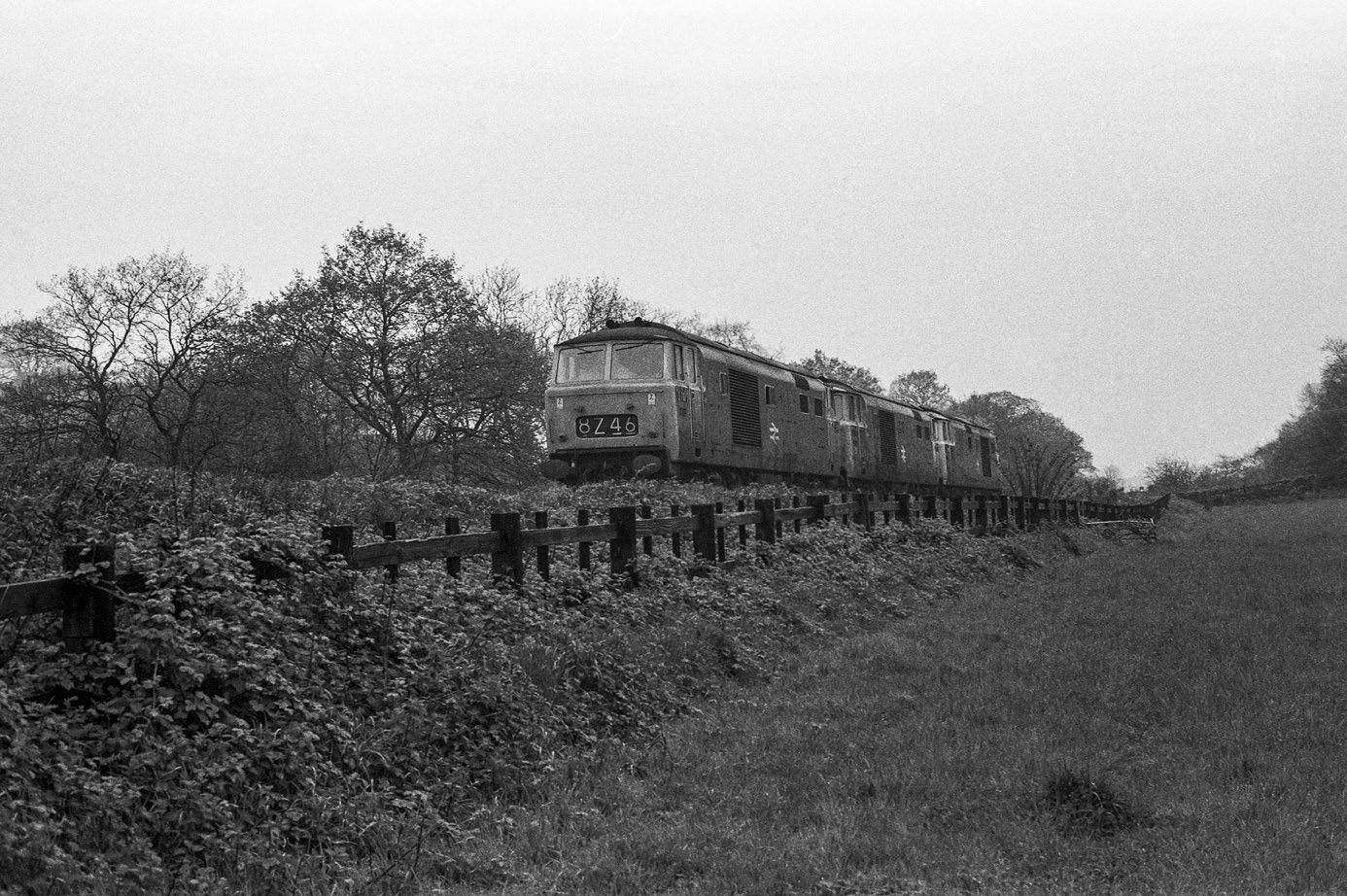
You can almost feel the thrumming of its Maybach engine as a Hymek Type 3 Class 35 charges through the then-closed Honeybourne station ready to attack the climb to Chipping Campden tunnel� The train is the 14�15pm 1A26 from Worcester to London Paddington and was photographed in late 1971� On the right are the Engineers’ Sidings known as Honeybourne Tip and the train is about to pass over the GW Stratford-upon-Avon to Cheltenham line �
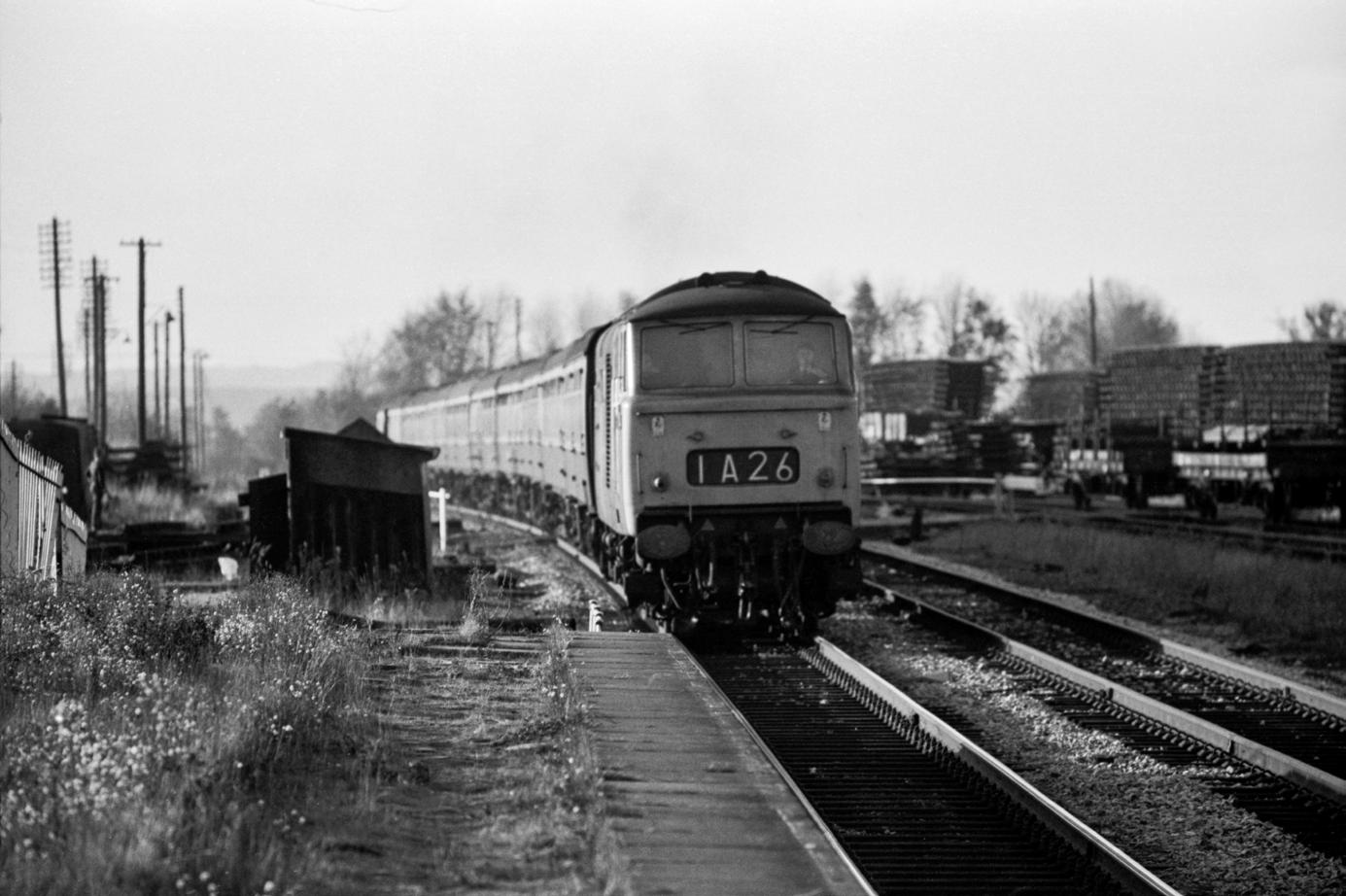
Saturday afternoon activity at Honeybourne Tip as a single Bogie Bolster is loaded ready for Sunday engineering work with a Class 08 350hp shunter, D3964 (later 08796), on hand to marshal the wagons�What would today’s automated Engineers’ staff and vehicles make of the assorted wagons in use here, along with the classic or vintage Ruston Bucyrus crawler crane?
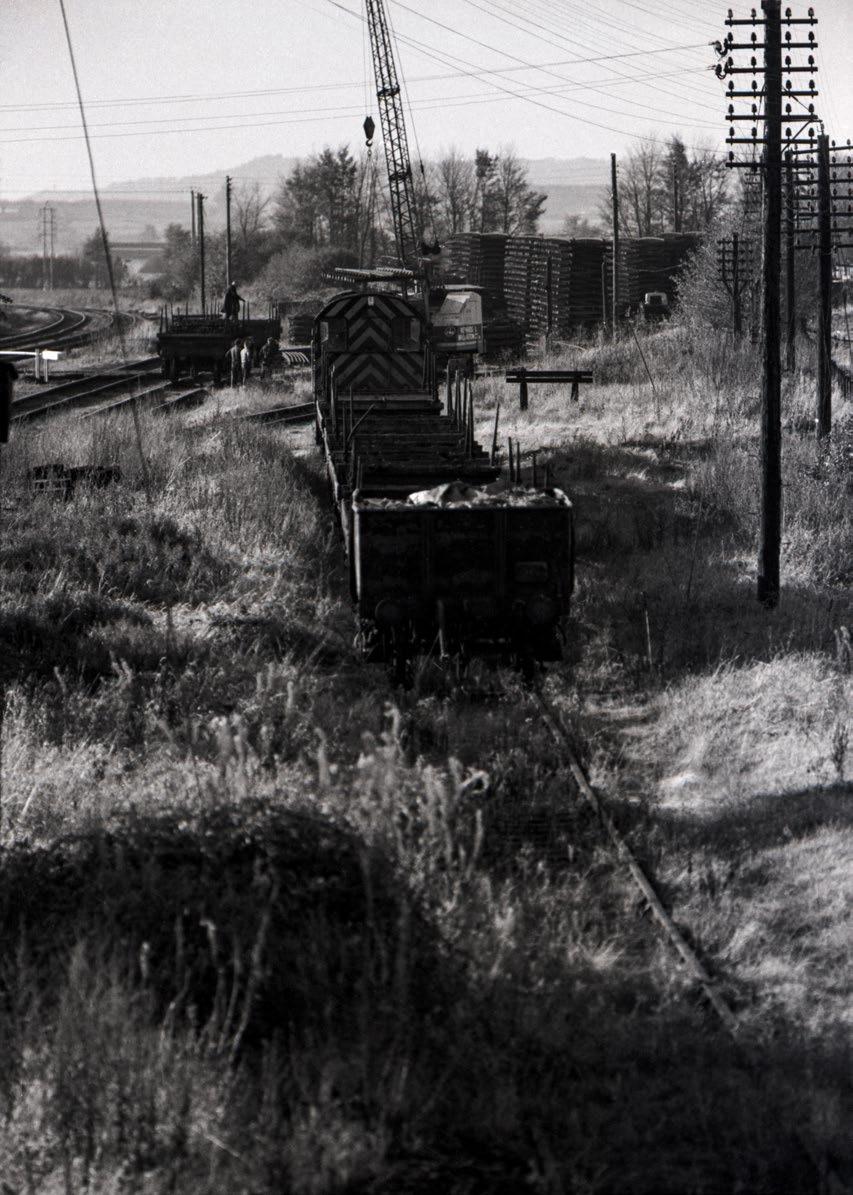
D3964 (later 08796), a Worcester allocated Class 08 350hp shunter, is on duty at Honeybourne Tip on a Saturday afternoon assembling an engineers train ready for a working trip on what is now known as the Cotswold Line � It is a sobering thought that the changes that have taken place on Britain’s railways mean that the sight of one of these engines, despite hundreds being built, is now a rare and noteworthy occasion�
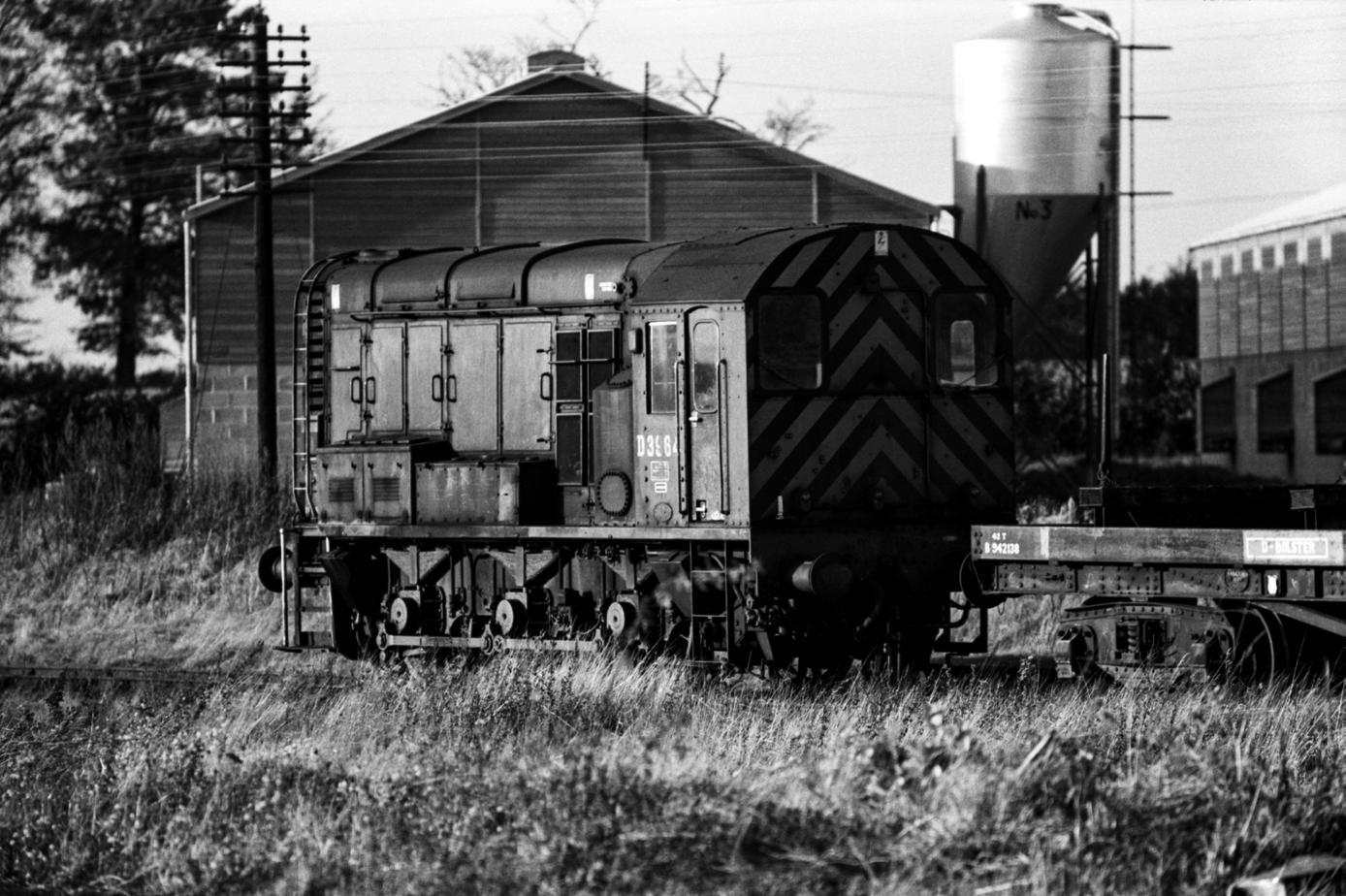
Hymek Class 35 D7073 stands in the rain in the reception sidings of Long Marston Army Depot with an enthusiasts’ special titled ‘The Western Trooper’. The train ran on 16th October 1971 and had started in the morning from London Waterloo headed by the Western Class 52 (D1033) of the same name and travelled to Oxford via Staines. There, it diverted onto the remaining, freight-only, part of the Universities Line as far as Bicester Town. After shunting into the Army Depot there, the passengers were treated to a ride on the private railway plus a visit to the Army loco depot before departing with the Western for Oxford (reverse) and then Banbury, Leamington, Stratford on Avon before heading south for Honeybourne, but stopping short at Long Marston where a steam-hauled special was laid on to take participants round the circular private line within the depot� In the meantime, the Western had been replaced with the Hymek for the return journey to Waterloo via Toddington, Cheltenham, Gloucester, Swindon and Reading� A fascinating day’s rail travel�
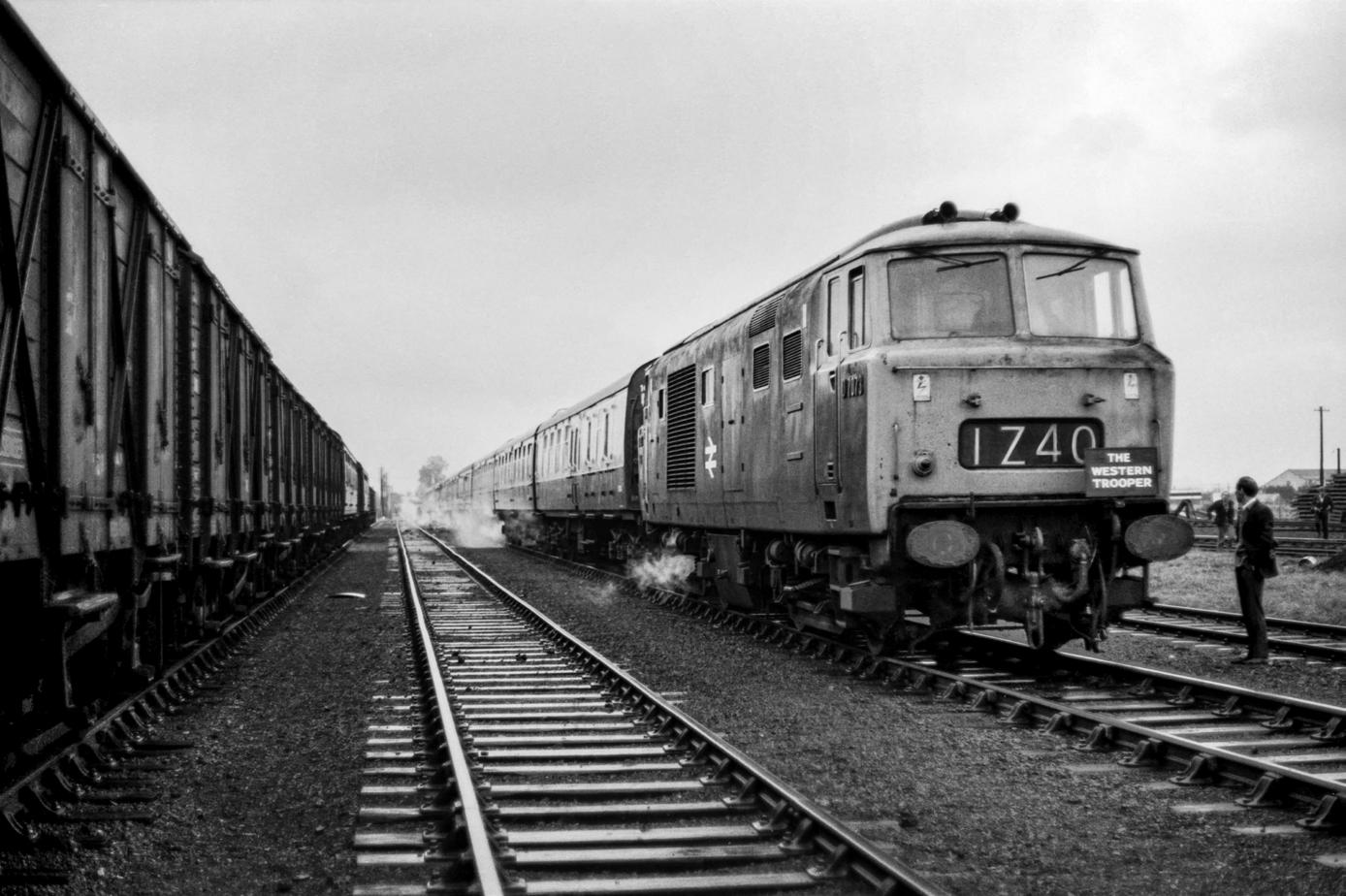
I had been camping in the field from which this shot was taken as I was attending a vintage car event at Prescott hill climb. It had been a beautiful weekend with clear skies and sunshine and being the second weekend in August 1976, it was light by soon after 05�00am� After delaying getting up for an hour or so I could hear what sounded distinctly like a train coming� At this time I assumed the Cheltenham to Honeybourne line was closed, but onward came the sound, so I picked up my camera and this English Electric Type 3 Class 37 powered into sight� The location is between Gotherington and Gretton on what is now the Gloucester & Warwickshire Railway� Less than three weeks later a massive derailment took place only 2 miles further along the line and trains never ran again under British Rail auspices�

Emitting that once so-familiar Sulzer Type 2 Class 25 ‘clankety clank’ engine tick-over sound, two late members of the class without corridor connections pause at the end of Gloucester Central’s long main platform� Having crossed the formation from the adjacent Horton Road 85B loco depot, the driver has to change ends before moving off. The lead loco is 7625 (later 25275) which was withdrawn some ten years after this photo was taken, finally broken up at Swindon works in 1984. The headcode would suggest that the locos are due to pick up a special Freightliner, or similar class of traffic.
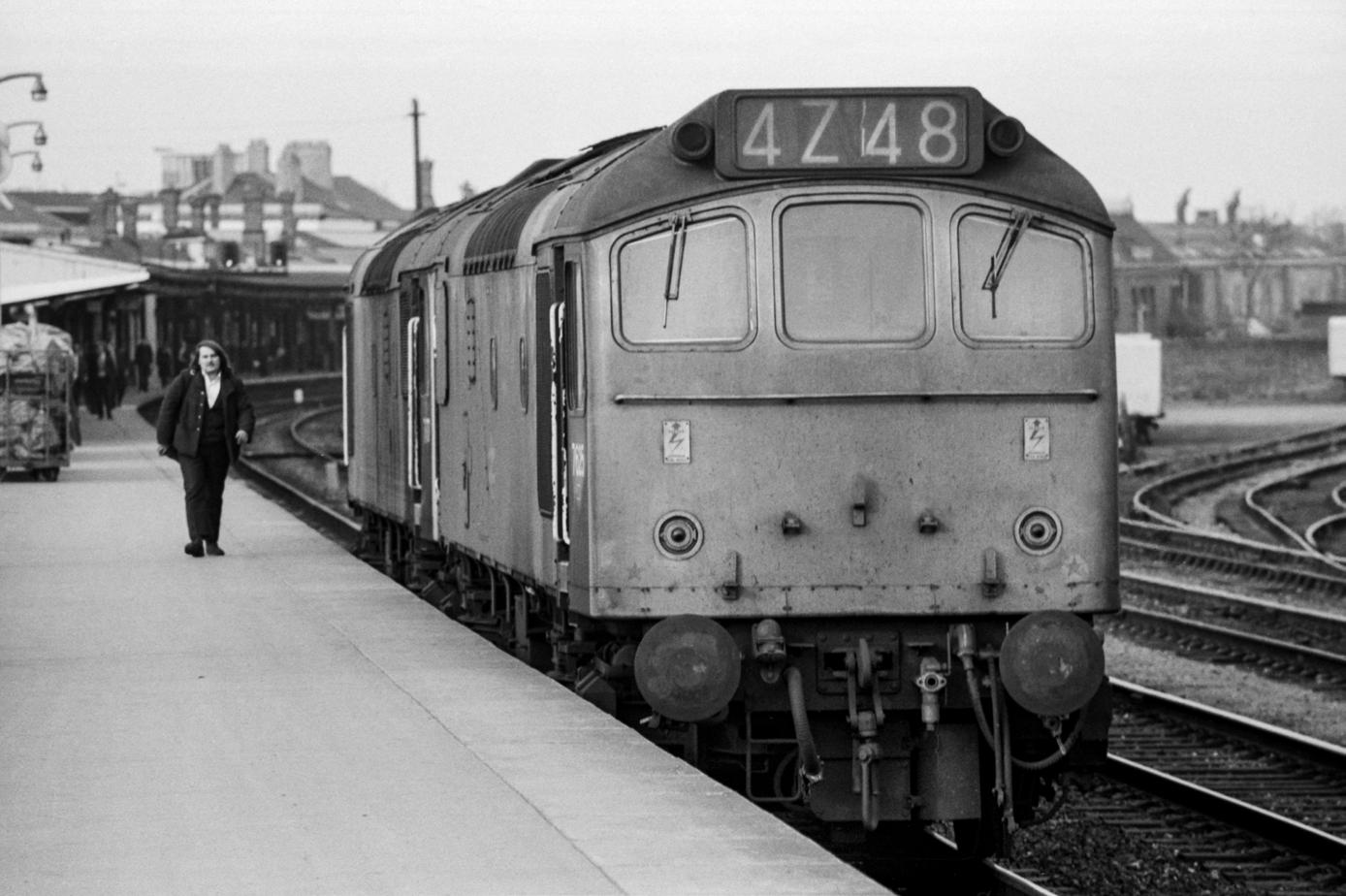
In largely original condition a Peak Class 46 D165 (later 46028) negotiates the tight trackwork of Gloucester Horton Road depot – 85B. Behind it is an ex-GW Fruit D long-wheelbase van in use for the movement of locomotive spare parts between works and depots. The city enjoyed two motive power depots in steam days, the other being Barnwood, which was used by the MR locomotives in the area, both for main-line traffic and the extensive dock lines and sidings.

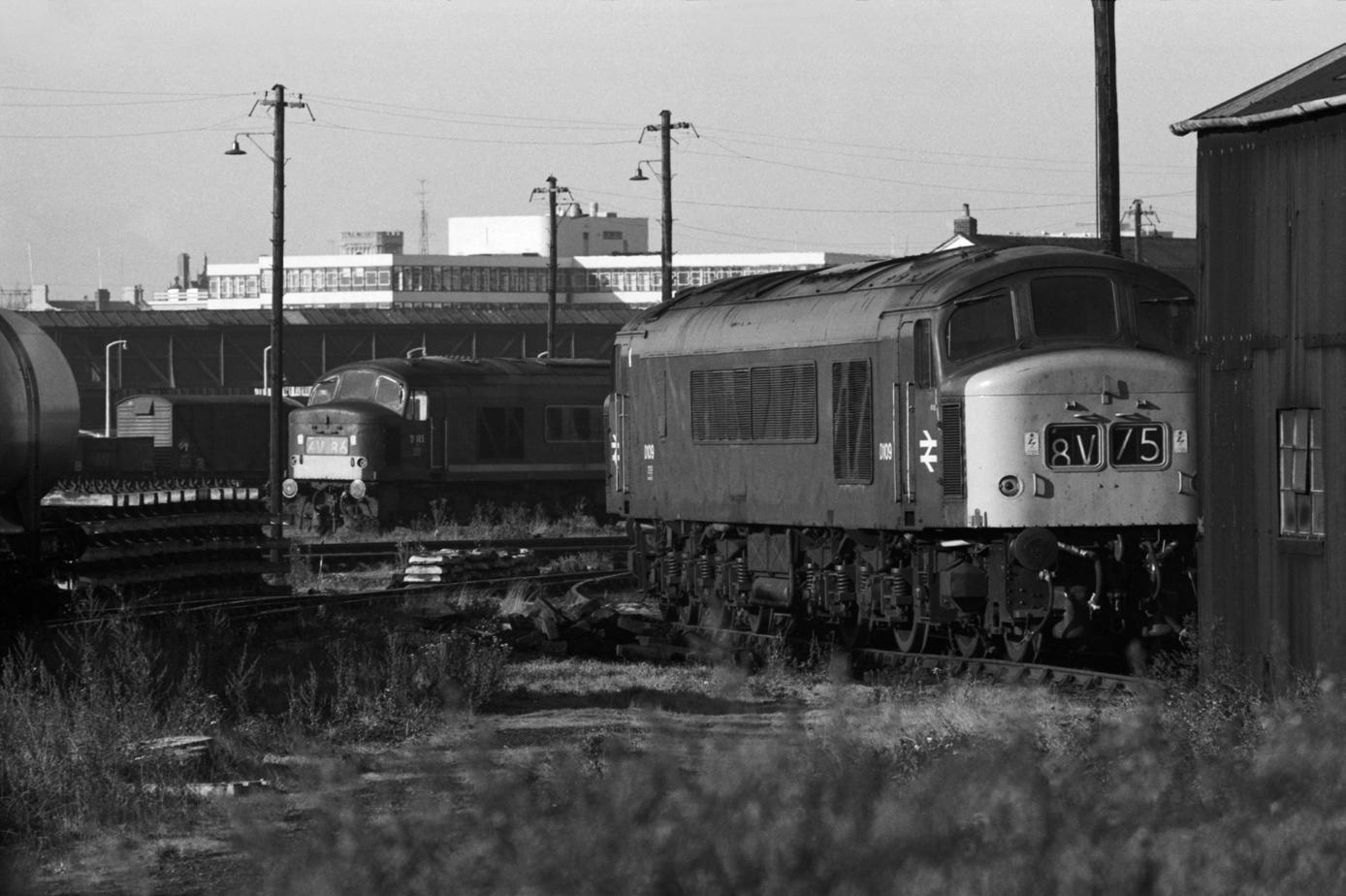
Spotters discuss the occupants of Gloucester Horton Road depot on a Saturday morning� In steam days all these locos and sidings would have been within 85B’s main shed building. With the Cotswolds behind, there are two Sulzer Type 2 Class 25s, two Peak Class 45s (the front one is a ‘namer’) and three Class 08 350hp shunters waiting for Monday morning� 6V86 must have been a local freight service as the headcode appears on the Peak in this shot as well as the previous one �

A sunny Saturday morning around 1970 and a visit to Gloucester Horton Road motive power depot finds a Hymek Class 35 D7098 stabled with a Peak Class 45 number 74 (later 45051). A further Peak rests in the depot yard beyond. The locomotives are all in fine fettle and look not long out of works. Once steam was eliminated from British Rail, in the fever of modernisation all remaining locomotives had their D or E prefixes deleted, even to the crass lengths of painting over the cast Ds on Hymeks! This was an initial step at renumbering before the computerisation heralded by TOPS required a totally new numbering scheme for the whole BR motive power fleet. At this time Gloucester still boasted two stations, Central, which coped with what were essentially ex Western Region services and Eastgate which was still very much Midland Region focussed, hence the mixture of WR and LMR locos�

Two of the BR’s Type 2 classes of diesel nestle together for company outside the original motive power depot building of Gloucester Horton Road some time in 1973� On the left is a Brush Type 2 Class 31 5828 (later 31295/31447/31547), originally intended for Eastern Region mixed traffic services. At first fitted with Mirrlees 1365hp power units they were mostly rebuilt with 1470hp English Electric units and spread their wings to venture to the Western and Midland Regions� On the right is an example of British Rail’s most common freight and local working Type 2 diesel, a Sulzer Type 2 Class 25 5202 (later 25052), a type that was also often seen in multiple on passenger relief services and in Scotland. In effect they were Derby’s standard Type 2 diesel locomotive. 5828 would later be the first Class 31 to visit Cornwall during its time at Laira depot for Type training for rail crews�
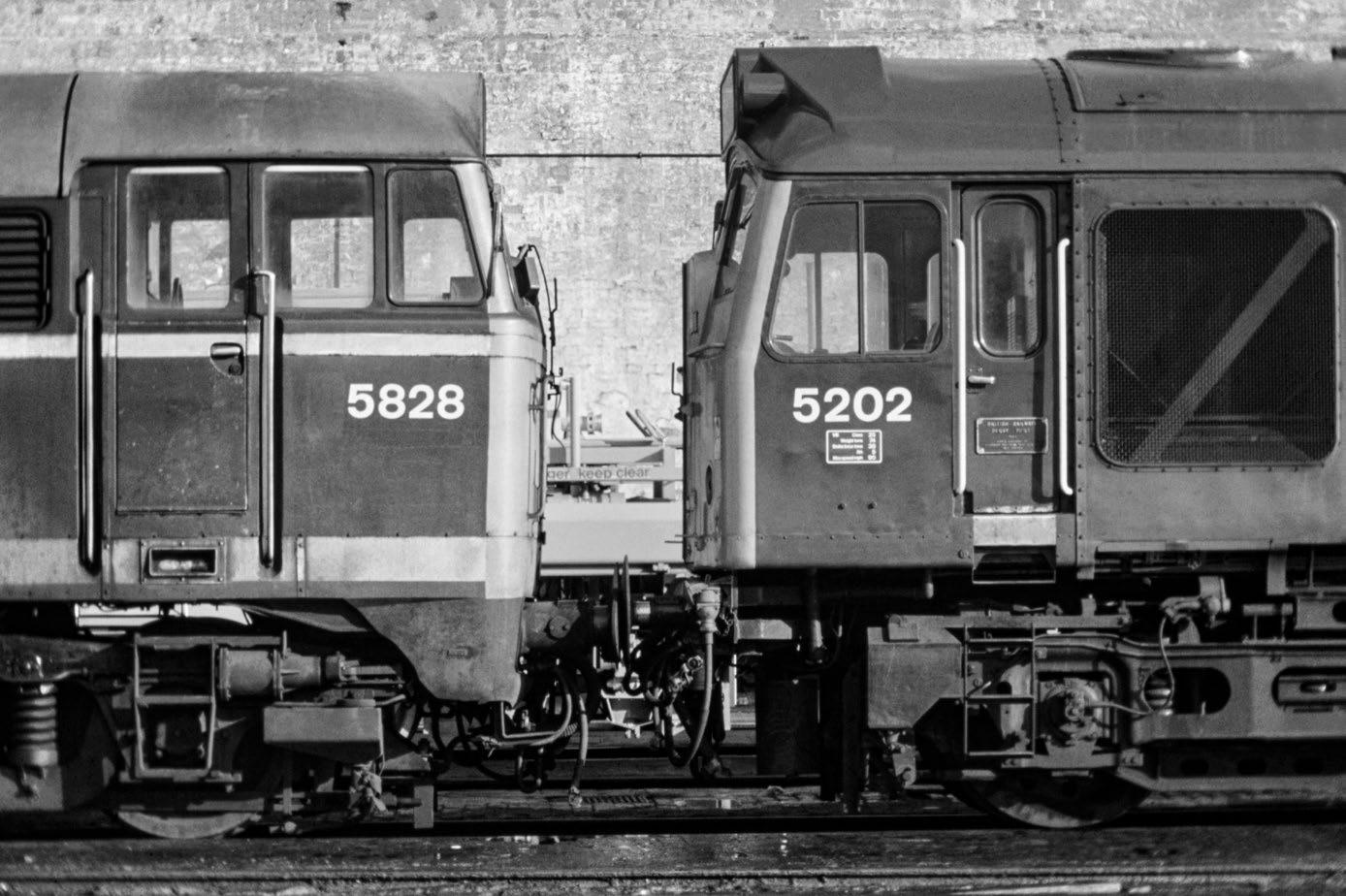

One of the WR Brush Type 2 Class 31s, 5826 (later 31293), that seemed such an inadequate replacement for the Hymeks, gingerly creeps through Gloucester Central with an engineer’s train of ballast from the Parkend or Tintern Quarry in the Forest of Dean. The track layout at the rebuilt and remodelled Central station had been greatly simplified and the train is here joining a reversible through line that enabled, through a set of crossings halfway along the platform, two trains to be berthed in the one long platform at the same time �













